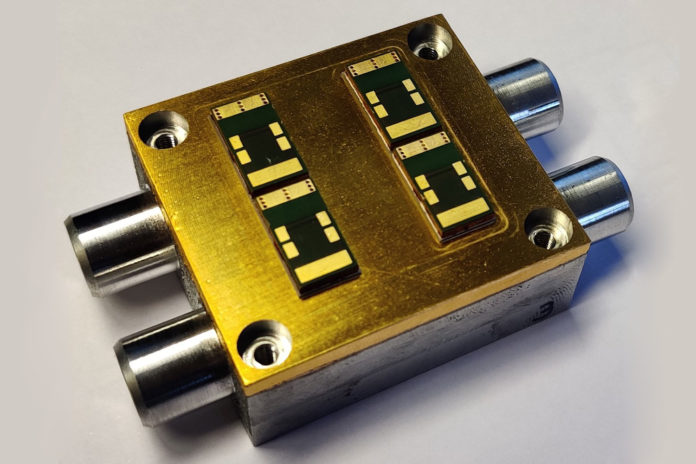Many of us automatically think of the battery when it comes to improving the range of electric vehicles. But these vehicles also contain many moving parts that play a role in the system’s overall performance.
By rethinking the way power inverters transfer current from a battery to an electric motor, scientists from the Fraunhofer Institute for Reliability and Microintegration IZM are developing electronic control units, so-called power inverters, which convert the energy between battery and motor much more efficiently than is the case today. This device converts the direct current from the battery into the alternating current that drives the electric motor. The prototype they are developing is likely to improve the range of electric vehicles by 6%, they say.
Acting as an intermediate link between the battery and the motor, the power inverter, and its transistors are designed to handle large electrical currents that cause their temperature to rise as the vehicle is used. To prevent the device from heating up like a toaster, the heat has to be discharged over cooling elements that feature cooling ducts protrude into the water, where the heat is directed and dissipated.
Particularly when the vehicle is accelerating, braking, and traveling at high speeds, power is lost from the inverter as large quantities of current flow back and forth between motor, power inverter, and battery. Experts from Fraunhofer IZM have focused on this aspect by developing advanced transistors for inverters made of silicon carbide semiconductors, which dissipate less power as electric current flows through them. Because each one would dissipate more power and heat up more intensely, they need to be cooled particularly well. The cooling elements of the power inverters have now been completely redesigned, the idea being to keep the semiconductor cooler while maintaining the same dissipation rate.
Experts have used 3D printing to produce cooling elements with much thinner walls and placed transistors on a metal plate of just a few millimeters thick. As a result, the transistors move closer to the cooling water, and this intensifies the cooling effect. The cooling ducts also serve as structural elements supporting the metal plates, and the fineness of the materials allows them to absorb the stresses arising from the heating and cooling of the inverter with very little deformation. Plus, instead of solid copper tracks, flexible copper wires tie the whole thing together, further reducing voltage during operation.
The new power inverter will be tested at project partner Robert Bosch over the next few months. The Porsche company will then install the device in a newly designed drive train, which is precisely matched to the SiC structure. “We still have some way to go before the device is ready to go into production,” says Eugen Erhardt. “In the first instance, we are pulling everything together to create a prototype. The individual process steps will then need to be further optimized.”
